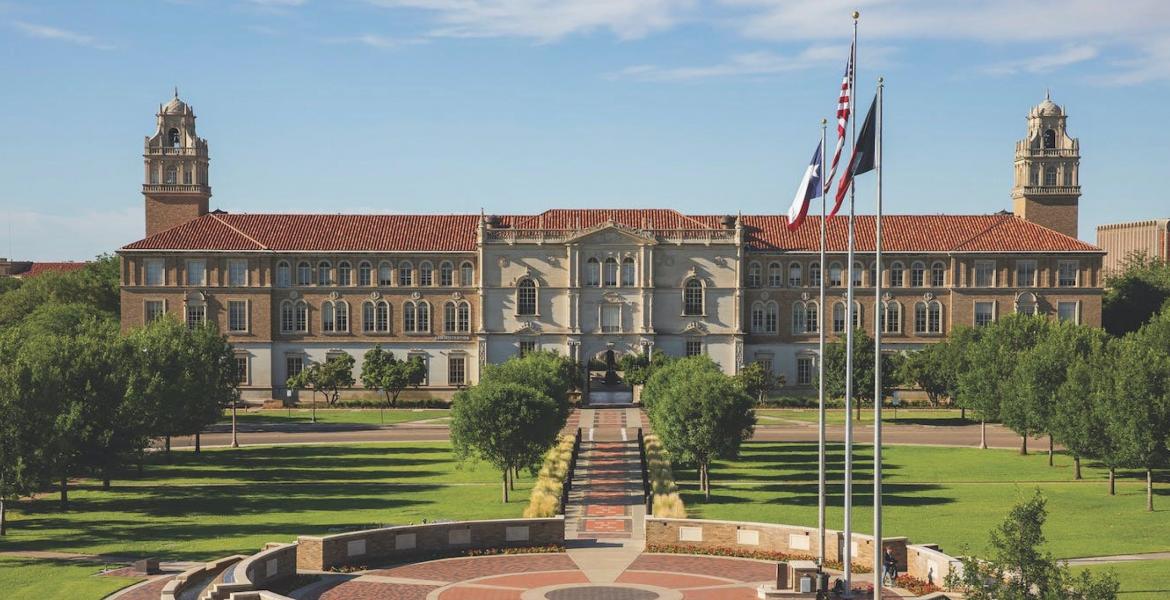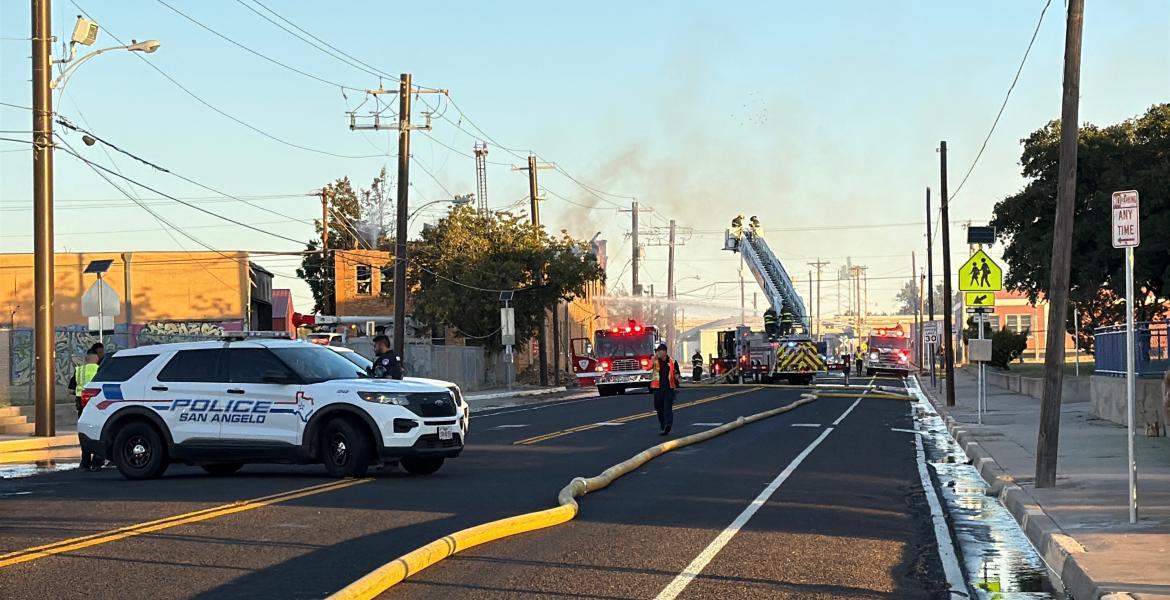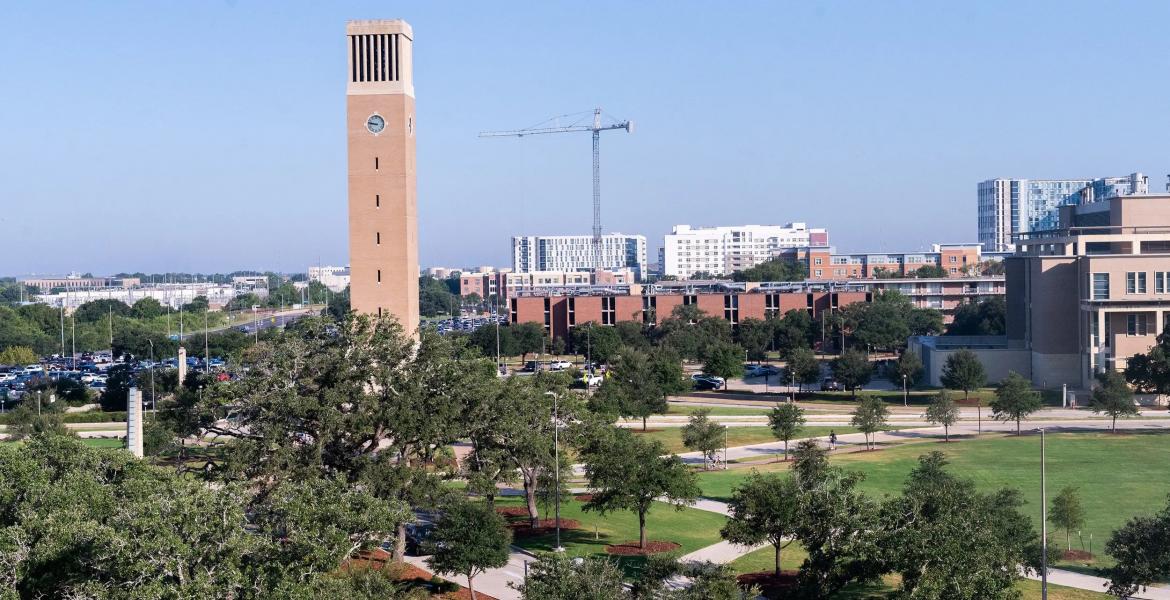They call themselves The League of Extraordinary Space Cowboys, and Friday morning, on the field of the Eldorado High School campus, all eyes were centered on the three engineering students as they prepared a second launch of their self-designed and fabricated space probe, Eagle II.
Spectators, students and media waited anxiously on the school grounds for launch while another 130 or so viewers watched the Space Cowboy’s live stream online, some calling in questions or writing on Facebook to show their support from Michigan, South Carolina, California, all over Texas and as far away as Kuwait.
The students made headlines with their first launch on Feb. 18, when the probe was sent up an astounding 90,000 feet and sent back images showing the blackness of space and curvature of the Earth. At that altitude, the device had climbed completely out of the Earth’s atmosphere and was on “the edge of space”. This time around, the probe was sent up 160,000 feet and was predicted to land somewhere between Brady and Brownwood.[[{"fid":"5105","view_mode":"default","fields":{"format":"default","field_file_image_alt_text[und][0][value]":"Photo/Space Cowboys","field_file_image_title_text[und][0][value]":"Photo/Space Cowboys"},"type":"media","attributes":{}}]]
Seniors Michael Bilbrey and Reed Hariman, as well as junior Tres Whitten have been working on their probe—outfitted with all sorts of data measuring gadgetry—since the beginning of the 2013-2014 school year. The trio were aided by an additional dozen or so Eldorado High School students, who have labored intensively each afternoon to complete the project as part of the school’s four-year engineering program.
Michael Bilbrey did all of the visual programming for the probe, including building the software that displayed measurements of altitude, temperature, position and other information on classroom computer screens while the probe was in flight.
“We don’t have any control of where it goes,” Bilbrey explained, outlining the systems on board the small triangular device. “It [the controllers] allows us to know everything that’s going on, like the orientation, the temperature, the GPS. The GPS is the most important thing. We have an antenna on the probe and an antenna on the ground. We point those on each other and it relays back the position of it so we can keep communication and we can have all this live.”
Another band of students set off Friday morning post launch, headed toward Brady where they waited to recover the probe after landing. Once retrieved, the students will have collected immense amounts of data that their teacher, Paul McWhorter, will have the students analyze in their math classes.
“They’ll be doing math on it for a long time,” McWhorter said. “Today is the exciting part where you actually launch and collect the data. There’s months of work to be done now in analyzing the data. So if you think all of the math that you’re trying to teach kids, well all of a sudden they need that math to solve problems in understanding the particular characteristics of this flight. All of this data will be feeding into all of our math classes, so they’ll be acquiring kind of real world use of all the math skills we’re trying to teach them.”
The probe, McWhorter said, could also be used for practical applications in the professional realm as well. “There’s a lot of things that could be done with this, a lot of environmental monitoring.” McWhorter mentioned a recent scare of alleged release of radioactive material from Carlsbad, N.M. that weather patterns could have brought to west Texas. “With a platform like this we could fly through the air collecting data to see if there was any radioactive leak coming this way,” he said.
The probe is outfitted with three micro-controllers, 27 sensors, three GPS units, and two high-definition cameras and radios. The micro-controllers take the data from the sensors and stream video, pictures and data back to the ground station on Earth, which the students monitor in the school’s “Mission Control Room”.[[{"fid":"5106","view_mode":"default","fields":{"format":"default","field_file_image_alt_text[und][0][value]":"Photo/Space Cowboys","field_file_image_title_text[und][0][value]":"Photo/Space Cowboys"},"type":"media","attributes":{}}]]
The students were responsible for selecting what they wanted to measure with the device, and are collecting data on the temperatures inside and outside the capsule, the barometric pressure, the device’s acceleration and rotation, and its angular velocity, as well as altitude and position.
Guidelines for the program stipulate that the project have a certain degree of difficulty, and McWhorter says that this level is equivalent to a Master’s project in electrical engineering on university level.
“These kids are going to be bored when they get to college because they’re already going to know it all,” he mused.
As part of the program, students learn micro-controller design, circuit design and micro-controller programming. The program culminates in the senior project, and this year students were given the option of designing and building either the probe, a rocket or cell phone.
“We thought this would be the coolest thing and probably the most challenging thing,” Bilbrey said between questions from the school’s live media team. “That was the motivation, really. We thought it would be challenging and kind of leave a good impression.”
Bilbrey said he, Hariman and Whitten worked on the probe 2.5 hours each day in school and came in after hours and on weekends to complete the project. Now that they’ve sent the probe up twice he says he doesn’t know what’s next for the class, but he’ll be taking his experience with him to Texas A&M University, where he’s been accepted into the Electrical Engineering program.
“I think it was really helpful for my future and my future career,” he said of the project.” It will help me in college because I’ll be going for electrical engineering, so it will really help me be in competition with the people from the big schools.”
Reed Hariman also has plans for studying engineering and will be headed to the University of Texas to begin his studies this fall. Tres Whitten will follow Hariman when he graduates high school.
“It’s phenomenal,” McWhorter said of his student’s accomplishments at EHS. “These young kids are so smart and so energetic and they just need a little guidance, expertise and direction and it’s amazing what they can accomplish. They’re just phenomenal students.”
Watch the video:
[[{"fid":"5173","view_mode":"default","fields":{"format":"default"},"type":"media","attributes":{}}]]
The entire video playlist of the launch and pictures from space are here.
Subscribe to the LIVE! Daily
Required






Comments
Listed By: Whitney Frey
- Log in or register to post comments
PermalinkListed By: J D
- Log in or register to post comments
PermalinkPost a comment to this article here: